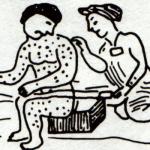Americans don't appreciate their government telling them what to do.
vaccines
The CDC has released a new report showing the world's progress (or lack thereof) in eradicating measles, the most contagious of all human infectious diseases.
Germans don't have a lot of patience for nonsense, often to a fault.
This past April I reported that Vaxart, a small San Francisco vaccine biotech, was ready to start dosing volunteers with its experimental vaccine against norovirus, aka, the stomach flu, in Phase Ib studies (See
Usually, when we have something to say about California, it's bad. After all, this is the state that gave us Proposition 65, a smorgasbord of insane public health policies, and 38 seasons of The Bachelor and The Bachelorette.
Although an annual exam is probably not necessary if you're young and healthy, it's a good idea to go to the doctor every once in a while. As he's prodding about, he might find something rather unexpected.
"Things have not gotten as stupid as they are going to get."
Most scientists would be flattered to have a celebrity endorse an article they wrote. However, if that celebrity is Robert F. Kennedy, Jr., the endorsement is tantamount to the kiss of death. If RFK, Jr.
Imagine if scientists invented a cure for cancer. Would you be interested in learning about it?
How many times have we heard in recent years that measles is no big deal? That it's just a harmless childhood disease (nicknamed "Mickey Mouse measles" following the Disneyland outbreak)?












